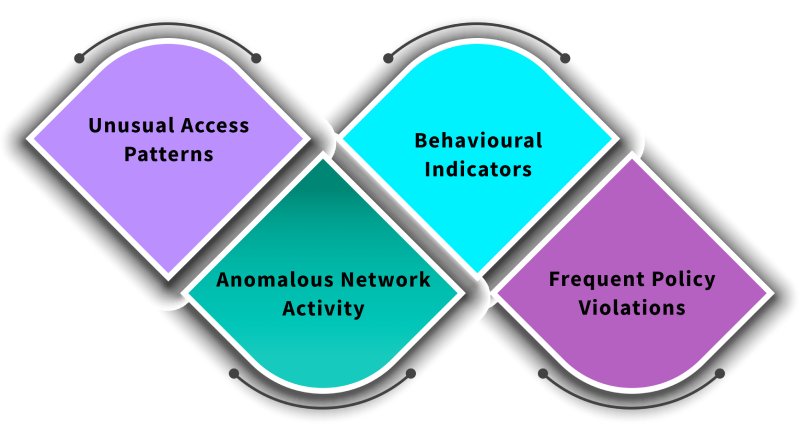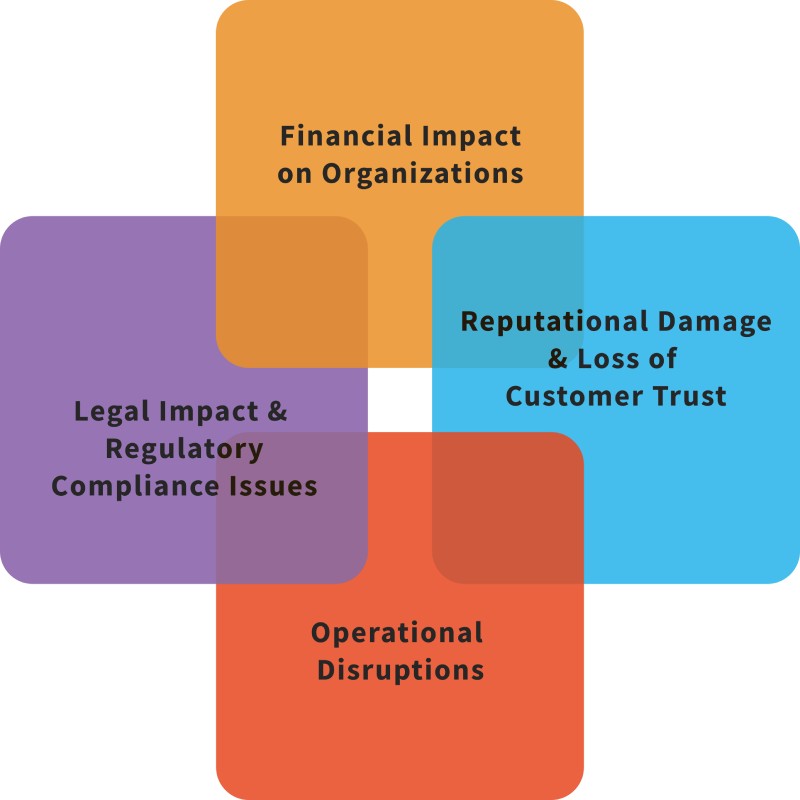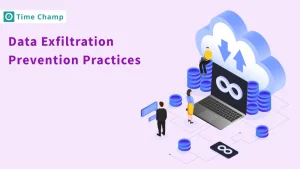Imagine a trusted employee unknowingly exposing sensitive data, or an insider intentionally causing harm. Internal security threats often come from within, making them harder to spot and prevent. But the good news is, that with the right strategies in place, these risks can be identified early. In this article, we’ll explain you how to recognize and address internal security threats before they escalate.
What are Internal Security Threats?
Internal security threats are dangers to the organization’s information, resources, or infrastructure. They come from within, usually from employees, contractors, or trusted third parties with access rights. These may be deliberate, like stealing information or sabotage. But they are often accidental, like data leaks. These are also harder to detect and prevent than external threats.
These internal security threats can harm your business. They may cause financial loss, damage your reputation, and lead to legal issues. Unauthorized access to sensitive data can be costly. It may require expensive recovery efforts, lead to regulatory fines, and erode customer trust. This would harm your long-term success and stability.
What are the Different Types of Internal Security Threats?
“Beware of the wolf in sheep’s clothing.” – Aesop. This age-old warning captures the essence of internal security threats. Dangers often come from trusted sources within. Understanding these hidden risks is important to safeguarding any organization. Here’s a look at the types of internal threats every business should know.

1. Malicious Internal Threats
Malicious insiders are employees or other trusted individuals in an organization who have deliberately used their access to cause harm. They might have stolen sensitive information, shared data with competitors, or damaged systems. This type of insiders might be motivated by revenge or personal gains or by financial rewards from other third parties. Detecting malicious insiders is tough. They already have access to critical systems. So, the threat of malicious insiders is serious.
2. Negligent Internal Threats
Negligent insiders are not harmful, but their careless activities create significant risks for the organizations. These threats often come from employees who do not pay attention to the security policy of the organizations. Sometimes, they do not use tough passwords, forget to lock their devices, and click on phishing emails. This ignorance leads to data breaches, system flaws, and security risks. While unintentional, the effects are very deadly. Therefore, training needs to be implemented to be aware.
3. Collusive Internal Threats
Collusion is an internal threat in which two or more insiders collaborate with an outsider to exploit the organization’s resources, data, or systems. This threat is perilous. Collusion can let individuals bypass even the best internal controls aimed at stopping an insider. For instance, one insider might provide access or sensitive data. The other might use it to steal data, hack systems, or commit fraud.
To mitigate this risk, organizations can implement regular audit solutions to ensure that internal controls are not only in place but are also functioning effectively. These audits help uncover weaknesses in the system and provide insights into areas where collusion might occur, reinforcing the overall security of the organization.
4. Compromised Internal Threats
Compromised insiders are attacks where an outsider gets employee credentials via phishing, social engineering, or malware. Once in control, the attacker can access data and systems as if they were the insider, making it hard to detect the breach. This threat is perilous. The attacker is using valid credentials. This lets them bypass many security barriers.
5. Third-Party Internal Threats
External contractors, vendors, or partners can emanate third-party insider threats due to access they create in the systems of an organization. They may not be an employee of an organization. But they may have a privilege that opens doors to future vulnerabilities. For instance, a vendor with weak security practices might unknowingly introduce malware, or a contractor could mishandle sensitive information. Organizations have to manage and monitor third-party access with caution in order not to be exposed to such risks.
What are the Key Indicators of an Internal Security Threat?
From 1976 to 2006, Boeing suffered a $2 billion insider attack when Greg Chung leaked aerospace secrets to China. Such cases bring to the fore the great necessity of catching internal security threats early enough. Here are some key indicators to watch for.

1. Unusual Access Patterns
A common sign of an internal threat is unusual or unauthorized access to sensitive files and systems. Employees accessing unfamiliar information or systems outside regular hours could signal malicious intent. Monitoring access logs helps find these strange patterns of behavior and prevent any potential breaches.
2. Anomalous Network Activity
Sudden spikes in data uploads or downloads, including accessing areas of the network without prior history, is an alarm. Employees who constantly download large chunks of information or commonly upload data may be giving hints about data exfiltration efforts. Attempts to connect to restricted network areas can be a sign of an internal threat. This is especially true for attempts from strange IP addresses or remote locations. They may be trying to find a backdoor around security protocols. Real-time network monitoring, with alerts for suspicious transfers, will help. It will identify preventable activities before they escalate.
3. Behavioral Indicators
Any behavior change can signal an insider threat. This includes increased secrecy, a sudden unwillingness to share a task, or anger towards the organization. Dissatisfaction among employees can lead to malicious acts. So, monitor their attitudes and engagement. Increased absenteeism or unnotified changes to work hours are usually out of character. They may indicate a risk, so they need close monitoring.
4. Frequent Policy Violations
Repeated breaches of the security policy may involve ignoring password rules, downloading unauthorized software, or evading network firewalls. These breaches indicate an insider threat in which individuals may deliberately violate security policies for some unauthorized activities.
Also Read: Top 10 Insider Threat Indicators You Should Look For
What are the Consequences of Internal Security Threats?
What happens when security threats come from within? Internal security threats can be especially damaging, putting sensitive data, company reputation, and overall trust at risk. Let’s explore the critical consequences these threats pose and why every business needs to stay vigilant.

1. Financial Impact on Organizations (Cost of Recovery and Fines)
Internal security threats often cause major financial losses. They come from stolen or compromised data, business disruptions, and the costs of incident response and mitigation. Stolen IP, fraud, and data theft will cause huge losses from leaks to competitors and the public. Regular audits and financial reviews will reveal such anomalies in time before total blowback is seen.
2. Reputational Damage and Loss of Customer Trust
When an internal security breach becomes public, it can severely damage the organization’s reputation, eroding customer trust and investor confidence. Reputational damage can harm a business. Clients and partners may doubt the organization’s ability to protect their data and sensitive information. There can be clearer, more transparent communication during incidents. It can help restore confidence and show a commitment to security.
3. Operational Disruptions
Internal threats can disrupt business. They can cause system outages, make unauthorized changes to critical processes, or sabotage key infrastructure. These interruptions may reflect negatively on productivity, project timelines, and employee morale. Consequently, these create more inefficiencies across departments. Access control and monitoring for unusual activities in critical systems can help prevent and quickly address disruptions.
4. Legal Implications and Regulatory Compliance Issues
Most industries have various regulations in data protection, such as GDPR, HIPAA, and CCPA. Security breaches can cause non-compliance. This can lead to fines, lawsuits, and greater scrutiny from regulators. This would damage an organization’s standing with regulators who raise oversight through tighter controls. Regular compliance training and audits can help ensure that employees understand and follow the rules.
Conclusion
Internal security threats break trust, disturb operations, and affect growth. Vigilant, proactive security measures are vital. They protect data and your organization’s reputation, finances, and future success. To protect the reputation, finance, and future success of your organization. Invest in preventative strategies and a security-aware culture, businesses can then thrive in a changing environment and do so securely.
Stay ahead of internal security threats with Time Champ
Take control, monitor activity, and safeguard your business today!
Signup for FreeBook DemoFrequently Asked Questions
Internal threats come from individuals within an organization, such as employees, contractors, or business partners, who have authorized access to company systems. A threat is called external when the persons initiating it come from external systems. These may include hackers, fraudsters, and cyber criminals who attempt to breach security from the outside. Here, external threats usually include unauthorized access, but threats exploit existing access and trust.
Implementations of strong controls and access, a regular auditing process, education of employees on best security practices, encouragement towards a transparency and accountability culture, monitoring of employees’ activity, ensuring rights limitations, and encrypted tool with regards to mitigating risks.
Internal security threats in cybersecurity involve risks that the inner organizations pose to these organizations by their internal entities who have abused their access to data, systems, or networks. Such acts include sensitive information theft becoming a victim of phishing scams or mishandling data, quite often unwittingly. These threats are particularly dangerous as they involve trusted personnel with legitimate access.
Examples of internal security threats include unauthorized access by employees to confidential files and the stealing of data that purposely or unknowingly downloads a source of malware. Others include weak management of passwords, mishandling of confidential information, and employees bypassing security protocols.







